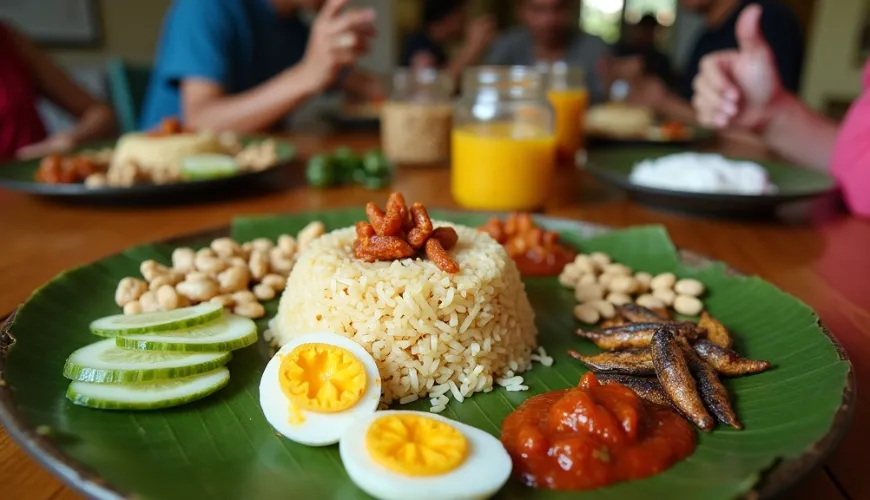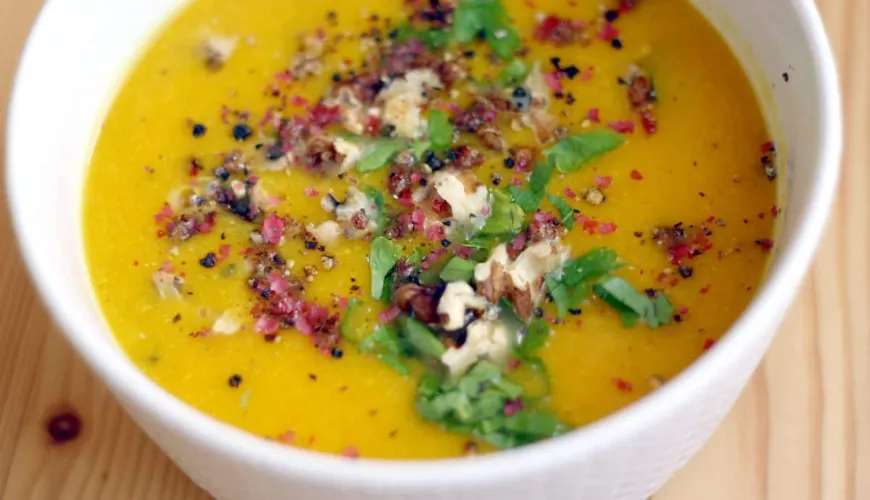
Discover nasi lemak and its rich history and tradition

Nasi lemak - A Traditional Malaysian Dish Conquering the World
When you hear “nasi lemak,” not many in the Czech lands immediately think of what it is. Yet, this dish with its exotic name has quietly and unobtrusively made its way into European menus in recent years. This is not only due to the growing popularity of world cuisine but also due to the trend towards healthier and more sustainable eating. Nasi lemak, which translates literally to “fatty rice,” is more than just a meal – it is a symbol of Malaysian identity, cultural heritage, and simultaneously a dish that combines a balance of flavors, colors, and nutritional values.
What exactly is nasi lemak?
Traditionally, it is a dish comprised of several components, each with its place and significance. The base is rice cooked in coconut milk, often with the addition of pandan leaf, which imparts a subtle fragrance. This is served with sambal – a spicy paste of chili, onion, and garlic that adds the necessary heat. It includes boiled egg, roasted peanuts, dried anchovies (known as ikan bilis), and slices of fresh cucumber. Some variations also include chicken or beef curry, or fried tofu for a vegetarian version.
This combination of seemingly disparate ingredients creates a harmony of flavors on the plate – sweet, salty, spicy, and fresh. In Malaysia, nasi lemak is traditionally served for breakfast but is commonly eaten throughout the day, both at home and on the street, as well as in luxury restaurants.
A Tasty History
The origins of nasi lemak reach deep into Malaysian history and culture. Some sources claim that the dish originated among farmers and fishermen who needed a substantial meal to sustain them throughout the day. Rice with coconut milk was affordable, easy to prepare, and complemented by locally available foods like peanuts, anchovies, and eggs made sense.
Over time, nasi lemak became not only the national dish of Malaysia but also a symbol of unity – loved by Malays, Chinese, Indians, and other communities living in this diverse country, regardless of religious or ethnic differences. In 2016, it was even declared the “world’s tastiest food” in an online poll by CNN Travel, surpassing hits like sushi or Italian pizza.
Nasi lemak and a Healthy Lifestyle – Is It Compatible?
At first glance, the name “fatty rice” might seem off-putting, especially at a time when fat is often demonized. However, the truth is that with proper preparation, it is a balanced, nutritionally valuable meal that offers a wide range of nutrients. Coconut milk does contain saturated fats, but in a natural plant form that the body processes differently than refined fats. Additionally, coconut fat has antibacterial and anti-inflammatory effects.
The dish is also rich in proteins – depending on whether you choose eggs, tofu, or chicken curry – and contains important minerals from peanuts and anchovies, such as magnesium, phosphorus, and calcium. Cucumber adds freshness and fiber, while sambal can stimulate metabolism thanks to the capsaicin from chili peppers.
Try our natural products
Furthermore, when preparing it at home, individual components can easily be tailored to specific dietary needs – for example, using brown rice instead of white, replacing fried anchovies with baked ones or omitting them entirely for a vegan version, or using sambal without added sugar and oil. Nasi lemak doesn’t have to be a heavy meal – on the contrary, it can be a wholesome part of a healthy diet.
A Cultural Phenomenon That Unites
Imagine sitting in a Malaysian village at a rickety plastic table, with a local family beside you, a banana leaf instead of a plate before you, and everything one loves on it. Children eat with their hands, adults enjoy a strong tea, teh tarik, and everyone relishes something that is not just a meal for them but a part of cultural and family identity.
Nasi lemak is often prepared for celebrations, festivals, or religious holidays. It is a dish that unites – both flavors and aromas, as well as people themselves. In Malaysia, it is not uncommon to find a street food stall serving this dish on every corner, often from early morning until late evening. In recent years, it has also appeared in modern forms – in vegan versions, wraps, burgers, or even as ice cream, attesting to its versatility and popularity across generations.
In Singapore, which shares not only geographical but also cultural ties with Malaysia, nasi lemak is considered “comfort food,” a dish that evokes a sense of home. And even though both countries engage in friendly disputes over its origins, no one questions its place among the most significant dishes of Southeast Asia.
How to Prepare Nasi Lemak at Home?
Interest in exotic cuisine is growing in the Czech Republic, and more and more people want to prepare traditional dishes at home – not only for the taste but also as a way to learn about new cultures. Although some ingredients may seem unusual at first glance, most are now available in regular supermarkets or specialized online stores with Asian groceries.
To prepare coconut rice, you will need only quality jasmine rice, canned coconut milk (preferably without added sugar), and a pinch of salt. Pandan leaf can be replaced with a bay leaf, although the aroma will be different. Sambal can be prepared at home from fresh chili peppers, garlic, onion, lime juice, and a bit of sugar, or bought ready-made at an Asian store. Peanuts and anchovies can be lightly roasted in a pan, eggs boiled hard, and cucumber sliced into thin slices. You can also prepare a simple chicken curry or fried tofu.
The first attempt may not look Instagram-worthy, but the experience will be all the more authentic. And if you play traditional Malaysian music and prepare tea with condensed milk, it will be a perfect little cultural adventure.
Food of the Future… or the Past?
In a time when the world is changing, we increasingly seek answers in tradition. While modern fast foods lure with their simplicity, dishes like nasi lemak remind us that true satisfaction comes from balance – of flavors, ingredients, and values behind the food. It is a dish that teaches patience in preparation, respect for cultural diversity, and joy in shared dining.
As renowned Malaysian chef Redzuawan Ismail says: “Nasi lemak is not just a meal. It is a story that people pass down spoon by spoon.” Perhaps now is the right time to include something in your culinary experiences that tastes of distant places but is also doable at home – and most importantly, brings joy.




